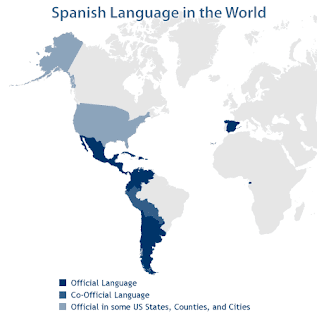
To the average person the word Localization, (L10N), means nothing, but when we say it is the adaption of a product to a specific locale and mention the word translation, they can identify with this. However, there is much more to Localization than simple translation and in this article we will explain in detail website localization.
Website Localization is the process of translating a website (menus, help, tool bars, etc.) from one language to another without altering the code and adapting the translated website linguistically and functionally to a specific locale. This is done with the use of specialized software (CAT Tools). For all those companies who wish to publish their website in more than one language, translation companies offer a broad range of website translation services better known in the industry as “Localization services for websites”. Bearing in mind the complexity of localizing a website, some Translation companies take care of the whole process and where necessary coordinate with the designers and engineers of the client company to make the translated website function in the market it is destined for. One must also bear in mind the degree of ownership the client and the translation company have during the process when sourcing the original translation quote. The typical process involves the extraction of the translatable text from the website into a compatible Translation Memory environment format, translation and revision of the text within the Translation Memory environment by the translation company, re-engineering of the target text back into the original website format, linguistic and functional testing and bug fixing which can be done by either the client or translation agency. The project process will have a bearing on the price of the translation project and it is important at the onset of the project to clearly define who is doing each task.
What are the Services included in Localization of websites?
The following is a more detailed breakdown of the different stages of website localization and the ownership of each process. For instance, during the implementation of multilingual websites one must also bear in mind that the target Language is culturally suited to the particular region the site is destined for, for example the idiomatic differences between the Brazilian Portuguese market and the Portuguese Market.The translation of websites includes:
Extraction of Translatable text
HTML and CSS (Static Text): Most websites are in hyper text mark-up language with the abbreviated extension .html and the cross website style governed by Cascading style sheets (.CSS). Most the translatable text is located in the .html files however, there are exceptions where there is some translatable text in the .css. The translatable text maybe extracted into word format, excel format etc. which are compatible with most translation memory environments or the html files maybe translated directly in tools that have translation memory and localization capability. In this case the translator must have the capability to work with the localization tool chosen by the client and will do a lot of the localization such as string re-sizing as he is translating. In the first case the translated files are re-engineered back into the .html website format by an engineer on the client or translation company side. The process and the owner of each task must be defined at the start of the project as it has an obvious effect on cost.
Graphics:Translatable text within graphics needs to be localized. A lot of graphics such as .png, .gif, .bnp contain text such as slogans that need to be extracted and localized. In most cases the translatable text in these graphics is not comprehensive and they are simply transcribed on a word or excel sheet
Audio: Many websites contain an audio component such as a presentation or Help tutor. If the source script for this is unavailable then the script for the audio needs to be transcribed for translation.
Dynamic Components of the website:Dynamic websites add a great deal of complexity to the localization of websites. A dynamic website allows the user to interact with the website for example performing calculations, compiling reports etc... It allows the input of variables from the user and an operation and output from the server system based on the variables received. The most commonly used coding languages for interactive websites are VBScript, JScript, PerlScript, ASP, PHP and various Database languages. Extracting the translatable text from this code is often a complicated process and is often translated in excel sheets with screen shots for reference.
Multimedia Components of the website: Apart from audio which is dealt with previously in this article there are other multimedia components of the website used to enhance interactivity enabled by plug-ins such as applets and Adobe flash. The text in these multimedia components need to be extracted.
Translation and revision of Website
Once the all the text has been extracted it is converted into its translatable format. Again the types of format of the files, the role of the translation company and client in each task and the use of TMs have a huge bearing on the process and should be decided at the out-set of the project.
HTML and CSS (Static Text): In many TM environments the HTML files can be translated directly, saved in the Translation Memory and many of the localization bugs fixed as the translator translates, however, in a lot of cases the translation company receives the html files in word or another format where the translation is carried out. The translations are then revised using a third party, the client or translation company depending on how the process was already defined.
Graphics: With the graphics a screen shot of the original localizable graphic and a space for the translation is prepared say for instance, in an excel sheet.
Dynamic Components of the website:With regard to the dynamic translatable text, again there are various localization tools with translation Memory capabilities that can handle all the aforementioned code and database files. Again the localization process decided upon and the role of each stakeholder has a huge bearing on how the files are received by the translator.
Audio:In cases where there is an audio component of the website the original script may available for translation, otherwise the original script has to be transcribed into a word or excel file. The target script is then recorded in a recording studio according to certain parameters such as sex, character...etc.
Multimedia Components of the website: The translators can use the original website version of the multimedia component for reference while translating in excel.
Localization Engineering of translated and revised target files
HTML and CSS (Static Text): If the translator delivers the html files directly then this process is a lot simpler as the engineer on the client or translation company merely has to upload the files on the server for the next stage of the website localization process. However, the process becomes a little more tricky if the files are delivered for instance in word. This means that the engineer, be it on the client or translation company side, has to do a lot of re-tweaking to dump the translated text back into the source text for the next localization phase. It complicates the engineering phase with an extra process that involves, depending on the format, text editors, WYSIWYG offline and online editors such as Dreamweaver and iWeb respectively.
Graphics: The translated text for the graphics must be re-engineered into the graphics via a graphics editor such as Adobe photoshop, Corel Draw etc......In most cases we need the original art work of the graphic to manipulate it.
Dynamic Components of the website: Again there are a number of approaches to this step. The engineer may just copy and paste the target texts back into the dynamic code using a simple website editor such as dreamer weaver or a development environment such VB studio.
Audio: Once the audio has been recorded it has to be post edited or tidied up by removing glyphs, static, long silences etc...
Multimedia Components of the website:The translated text is re-engineered back into the multimedia file using various software available on the market.
Localized Website Build
Once all the translated website files are ready they are uploaded into the correct directories on the server for the next phase of localization.
Functional Localization Testing
There are various functional tests that can be run on the files, conducted by the localization engineers:
- Link testing: There are various tools that quickly tell us what links are broken and need to be fixed. A lot of editing tools have their own link check feature. e.g. Xenu and Dreamweaver.
- UI Testing: In the case where the translator has done no re-sizing of truncated and cut text or overlapping menus and dialogues, as he has not had the capability to do so with the file format he received, the engineer is responsible for this task.
- Cross Browser Testing: The engineer is responsible for ensuring that the site renders correctly across various browsers and has various tools at his disposal to carry out this task.
Linguistic Localization Testing
Now we have a fully functional website we have to have it tested online and in context by third party reviewer, a client reviewer or the translation company reviewer, whatever was decided upon. The linguistic bugs are documented and fixed by engineering. It is of the utmost importance that the linguistic bugs are updated too in the translation memory, otherwise the same bugs will keep popping up in later updates!
The same cycle of linguistic, functional testing and bug fixing continues until we have a GOLD version of the website that can now go live! As yo can see the process is very complicated and I have only scratched the surface. There are so many other questions to be asked during website localization such as will there be a partial localization or complete localization, is all the website worth localizing? For instance there maybe, out of date news which shouldn't be sent for localization to save time and cost. What SEO considerations have we taken into account for the localization of the website. Are the title, Headings, description, meta tags, alt tags translations effective key words. A literal translation of an English key word may be a very poor key word in another language. Carrying out SEO with translation in mind is opening up a whole new can of worms and there is a good article on this here with more details. Does the client have a style guide to follow on fonts and formatting? Is there a Glossary for particular words? To summarize when deciding on the optimal website localization process for us, other factors that influence our decision include the resources at our disposal, our budget, the tools we have and the deadline we have to meet.!
"Website Localization: Background and Methodology", is an article in the series "Localization: The definitive Guide" from One Stop Shop Translations. Other articles include:
- Software Localization: Background and Methodology- Online Help Localization: Background and Methodology
- End User License Agreements Localization: Background and Methodology
- Software Documentation Localization(Quick User Guides and User Guides): Background and Methodology
If you like this post please "like" or "share" for more content
Mark Kieran, CEO, One Stop Shop Translations
For our latest website translation rates click on this link or get an economically unbeatable software translation quote here.
Remember that translation of software is not just simple straight forward translation but a complicated process that involves many stages and specialized expertise!





